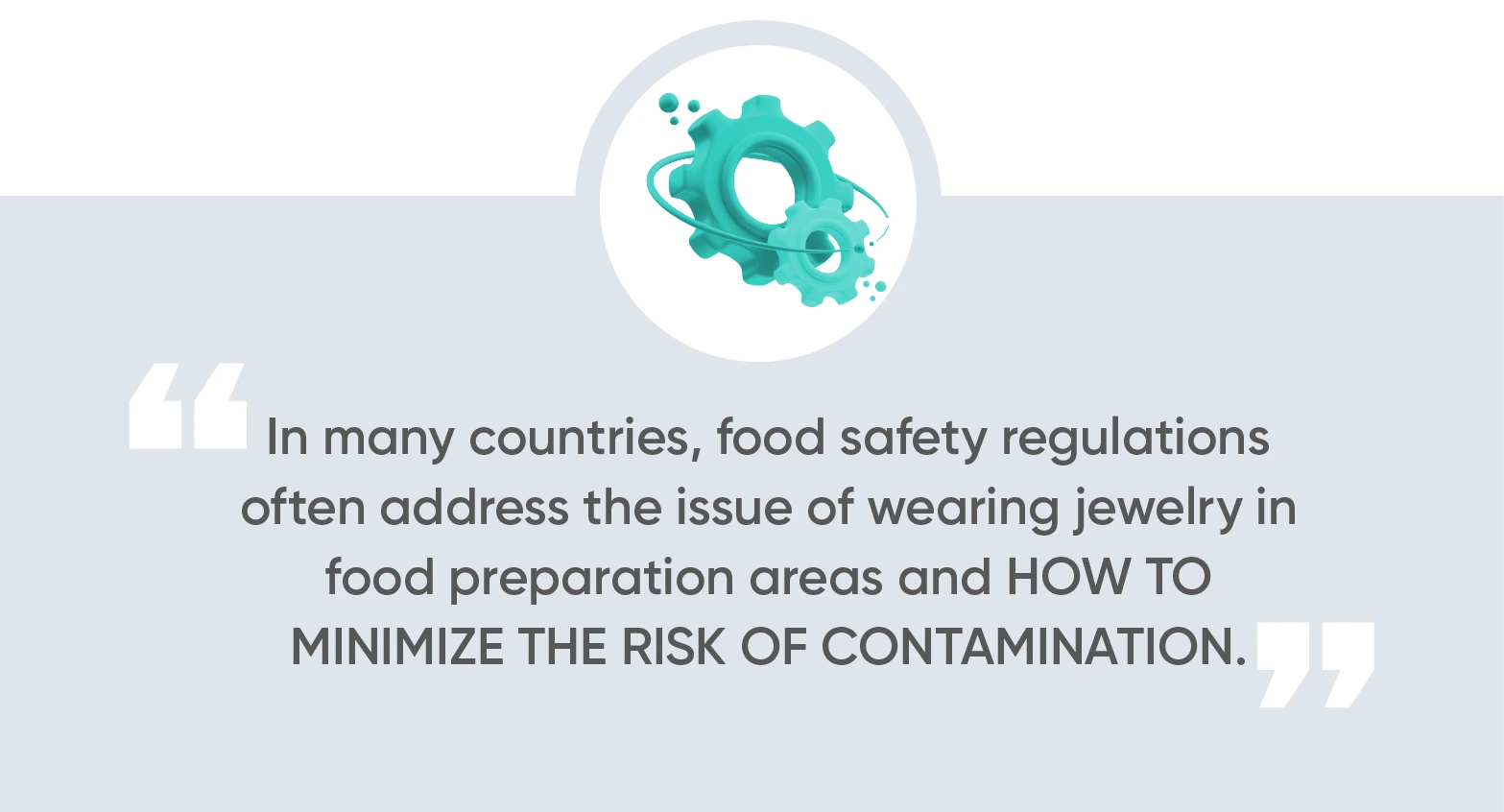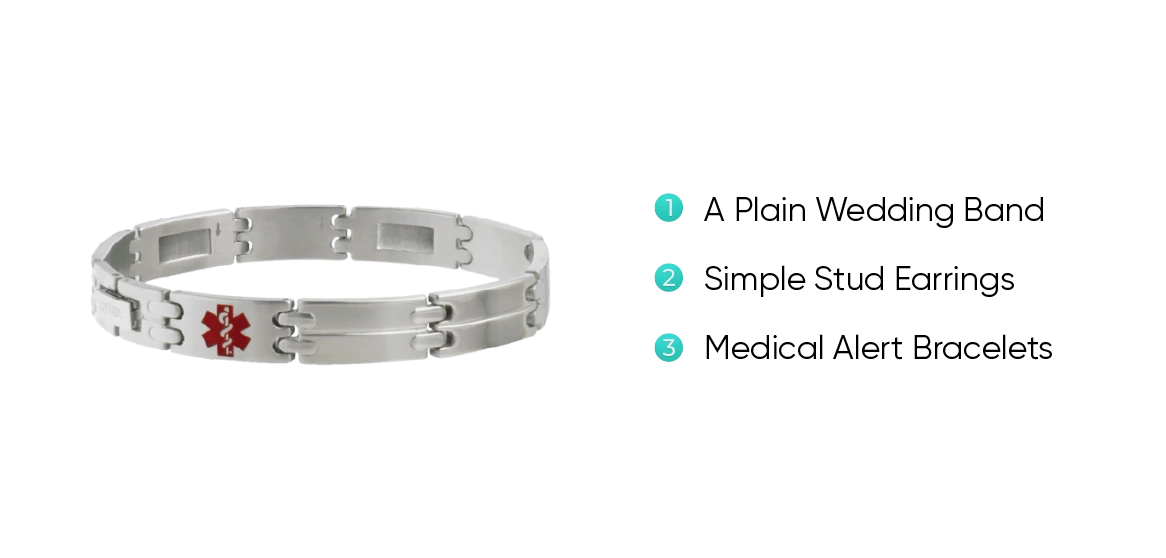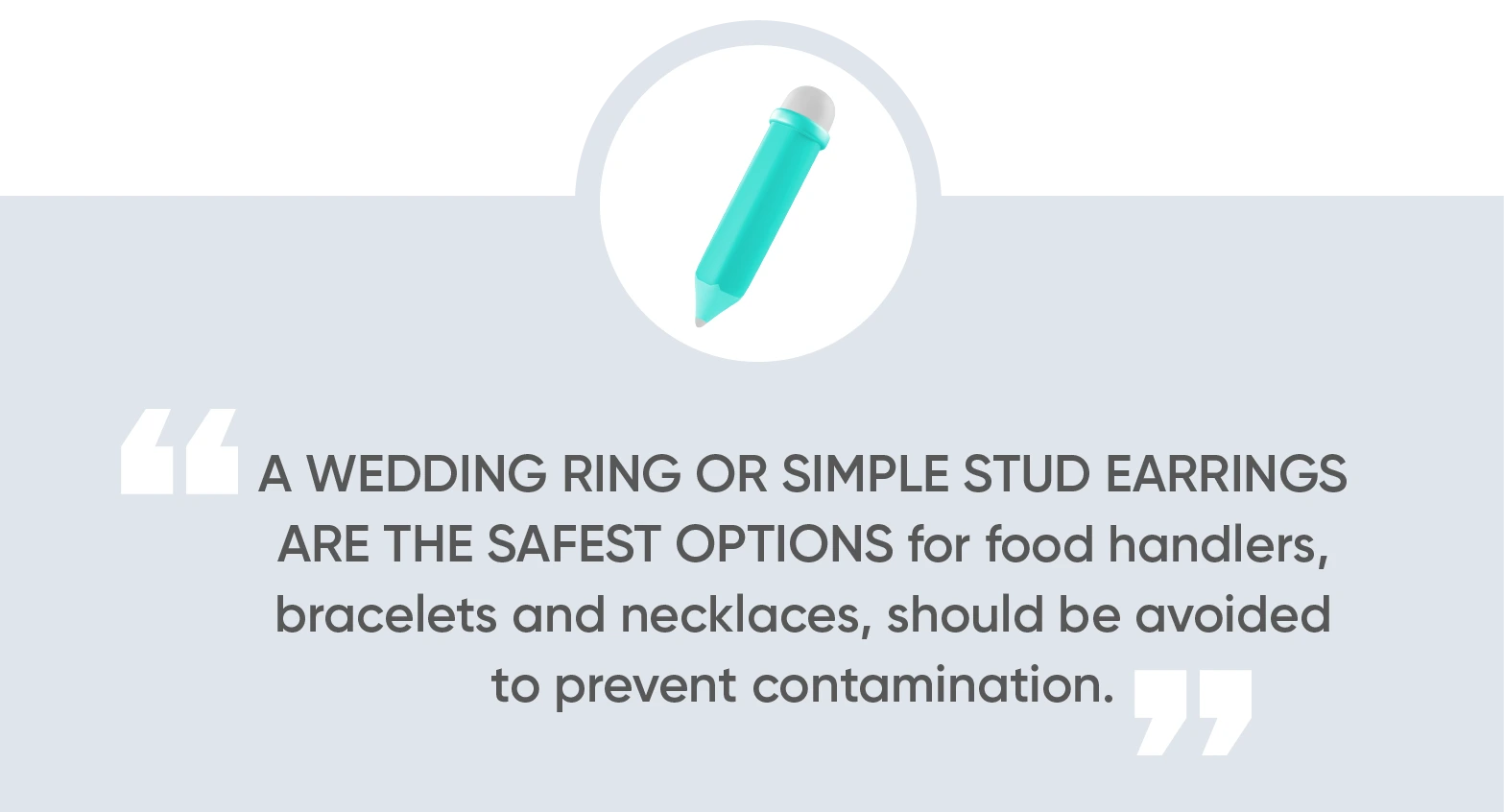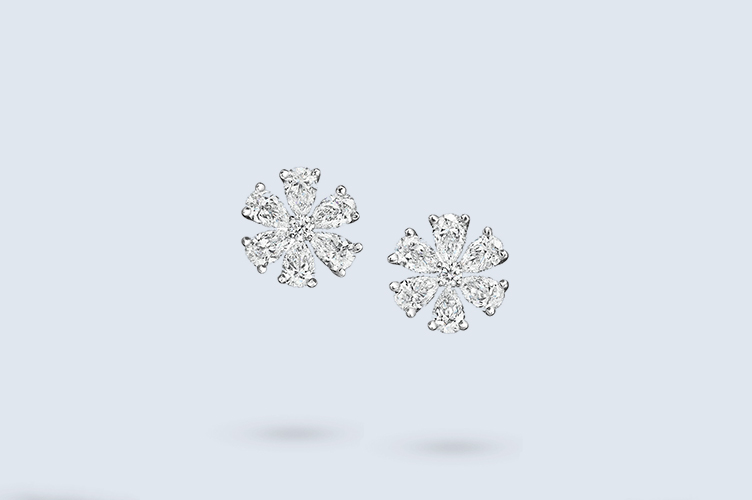What is the Only Allowed Jewelry When Preparing Food? A Guide to Food Handler Jewelry and Food Safety
Food safety is a paramount concern in the food service industry, where the well-being of consumers depends on the proper handling and preparation of food. While food handlers diligently follow hygiene protocols and safety regulations, one critical aspect often overlooked is what jewelry can food handlers wear.
If you’re wondering what is the only jewelry allowed when preparing food, you’re in the right place. Keep reading to explore the world of food safety and the significance of choosing the right jewelry when working in the food service industry. In this article, you’ll uncover the measures that can protect both food workers and consumers, ensuring a safe and hygienic culinary experience for all.
What You Will Learn
The Importance of Food Safety Regulations for Food Handlers
Before delving into acceptable jewelry options, you must understand the significance of food safety regulations for food handlers.
All food premises are responsible for delivering safe and hygienic food products to consumers. Improper handling can lead to contamination, causing foodborne illnesses and jeopardizing public health. Foodborne illnesses can result from biological, chemical, or physical hazards, and jewelry worn by food handlers can be a major potential food contaminant.
In many countries, food safety regulations, such as the Hazard Analysis Critical Control Point (HACCP) system, outline specific guidelines for food handlers to follow. These regulations often address the issue of wearing jewelry in food preparation areas and how to minimize the risk of contamination.
The Risks of Wearing Improper Jewelry While Handling Food
Wearing certain types of jewelry while handling food can pose significant risks.
Here are some of the potential hazards associated with different types of jewelry:
- Rings and Engagement Bands: While a wedding band is often seen as a symbol of love and commitment, it can be a source of physical hazards in a food processing environment. Loose stones, crevices, and intricate designs on rings can trap food particles and bacteria, potentially contaminating the food being prepared.
- Bracelets and Watches: Bracelets and watches can harbor bacteria and become a breeding ground for germs. Also, metal bands or leather straps can come into direct contact with food, making them potential sources of contamination.
- Necklaces and Chains: Necklaces and chains can easily fall into food during preparation, posing a choking hazard to consumers.
- Earrings: Large or dangling earrings may inadvertently fall into food, while facial jewelry, such as nose or lip rings, can also pose contamination risks.
What Type of Jewelry Is Allowed in Food Preparation Areas?
When it comes to wearing jewelry while handling food, food safety regulations generally state that food handlers are allowed to wear jewelry that doesn’t pose a risk of contamination.
This includes:
- A Plain Wedding Band: A simple and smooth wedding band with no stones or intricate designs is the safest option if you’re a food handler. A plain wedding ring is less likely to trap food particles and is easy to clean.
- Simple Stud Earrings: Stud earrings that sit close to the earlobe and do not dangle are acceptable. They’re less likely to fall into or touch food.
- Medical Alert Bracelets: A medical alert bracelet is typically allowed for health reasons but should be kept clean and sanitized to prevent contamination.
The Importance of Personal Hygiene in the Food Premises
Beyond not wearing improper jewelry in a food business, food handlers should also follow these personal hygiene practices to prevent additional food contamination:
- Hand Washing: Food handlers should wash their hands thoroughly and frequently, especially before handling food, after using the restroom, and after touching their face, hair, or any jewelry.
- Wearing Gloves: In some instances, food handlers wear gloves to avoid direct contact between hands and food. However, gloves shouldn’t be considered a substitute for proper hand washing.
- No Nail Polish: If you wear nail polish, you can harbor bacteria, so it’s generally discouraged for food handlers. If nail polish is worn, it should be well-maintained, clean, and free from chips.
- Regular Cleaning: Food handlers should clean and sanitize jewelry regularly, ensuring it won’t pose a contamination risk.
FAQs
Can wearing improper jewelry while handling food contaminate food?
Yes, improper jewelry worn by food handlers in food preparation areas can pose a major potential food contaminant risk, leading to food contamination and potential foodborne illnesses.
What jewelry is the food worker allowed to wear?
Food safety regulations permit only very specific jewelry options for food handlers in food preparation areas. Plain wedding bands, simple stud earrings, and medical alert bracelets are generally considered acceptable jewelry for food handlers and food workers.
Are food handlers allowed to wear a medical alert bracelet while handling food?
Yes, food handlers may be allowed to wear medical alert bracelets for health reasons. Still, keeping them clean and sanitized is essential to prevent contamination risks in the food processing environment.
How does proper personal hygiene and wearing the only allowed jewelry protect both food workers and consumers in food premises?
Proper personal hygiene practices, including regular hand washing, wearing appropriate jewelry such as plain wedding bands and simple stud earrings, and avoiding nail polish, play a crucial role in preventing food contamination.
What jewelry may be worn in food preparation areas?
Medical bracelets, stud earrings, and simple wedding bands are all customarily considered safe. If you want to wear something more intricate, you will need to consult with a manager.
Protect Your Investment
When it comes to preparing food, safety should always be the top priority. Food handlers must adhere to food safety regulations and only wear jewelry permitted in food preparation areas. A wedding ring or simple stud earrings are the safest options for food handlers, while other jewelry, such as bracelets and necklaces, should be avoided to prevent contamination.
Just as you protect consumers from contamination, though, you should also protect your jewelry investment. At BriteCo, we offer comprehensive and cost-effective jewelry insurance coverage. Our policies protect against loss, theft, and damage worldwide, ensuring your jewelry is safeguarded with confidence.
To learn more, use our convenient online tool to obtain a personalized insurance quote.











